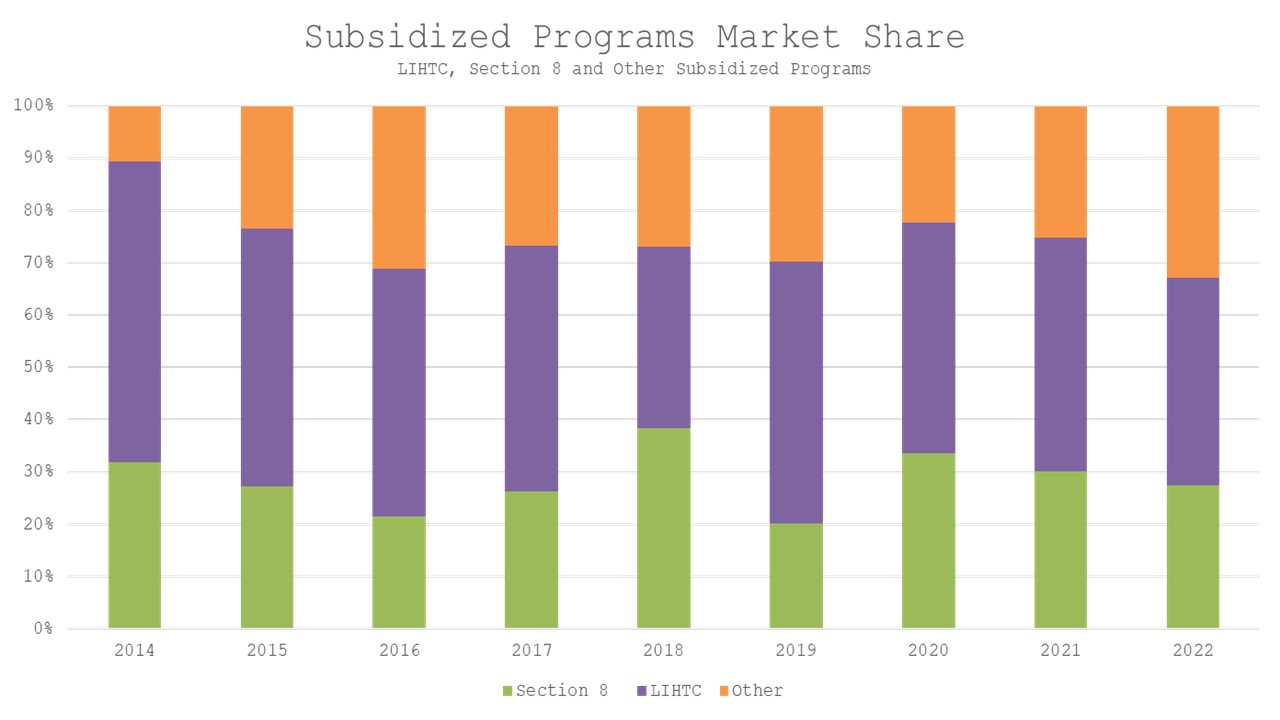The Census Bureau’s latest release of the Survey of Market Absorption of New Multifamily Units (SOMA) estimates that 57% of 85,530 unsubsidized, unfurnished apartments completed in the third quarter of 2023 were absorbed within the first 3 months following construction completion. For condominiums, 68% of the estimated 5,571 units completed in the third quarter of 2023 were absorbed in the first three months following completion. All statistics from the SOMA refer to apartments/condos in newly constructed buildings with five units or more.
The non-seasonally adjusted absorption rate for the third quarter was six percentage points lower than the second, from 63% to 57%. Over the year, the rate was down three percentage points. The number of estimated unsubsidized, unfurnished apartments completed in the third quarter was 85,530, the fifth consecutive quarter that SOMA had completed apartments above 80,000. Completions were down 0.07% from the third quarter of 2022 and down 10.7% from the second quarter of 2023.
The condominium absorption rate fell below 70% for the first time since the third quarter of 2020, down to 68%. This was a 15-percentage point decrease between the second and third quarters of 2023. As the absorption rate fell, completions rose to their highest level since the fourth quarter of 2021, standing at 5,571 units.
Additionally, the SOMA data provided annual estimates for 2022 completions. Within the annual estimates table, SOMA provides data on subsidized and tax credit multifamily units. The total number of multifamily units completed in 2022 was 359,100, slightly lower than the 2021 level of 363,700 units. For 2022, the number of unsubsidized units was 316,500, while subsidized units stood at 42,500.

Almost 12% of all multifamily units were reported as a subsidy and tax credit completion, the highest share for the available SOMA data. On average, over the eight-year period, 10% of multifamily completions were subsidized and 90% were unsubsidized.

As an aside, more than one subsidy could apply to an individual multifamily unit. The Low-Income Housing Tax Credit (LIHTC) continued to have the highest market share of subsidized and tax credit completed units in 2022, with around 39% of subsidized units being completed with LIHTC investment. This share is slightly smaller than 2021 when around 45% of subsidized units were completed with LIHTC. The Section 8 program remained the second largest individual subsidy program but lost market share for the second straight year, down to 27%. Other subsidized programs, which include the housing for elderly direct loan program and federal tax-exempt bond financing, had a market share of 32% of subsidized units.

Discover more from Eye On Housing
Subscribe to get the latest posts to your email.


This article highlights a decrease in multifamily absorption rates alongside an increase in the share of subsidized units. For construction loans, this data suggests a shift in demand dynamics within the multifamily sector, emphasizing the importance of flexible financing options to accommodate diverse project types, including subsidized developments, while mitigating risks associated with fluctuating absorption rates.